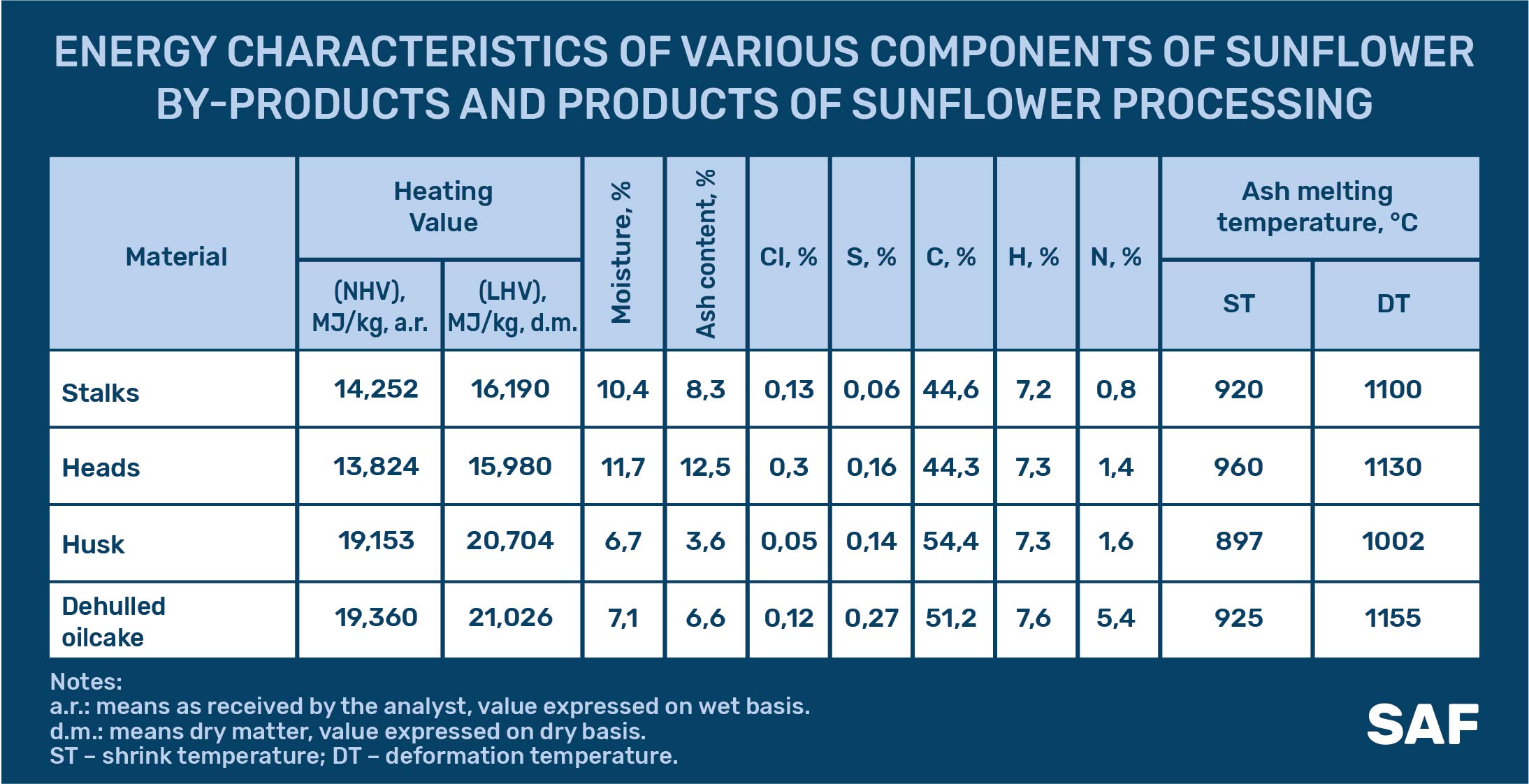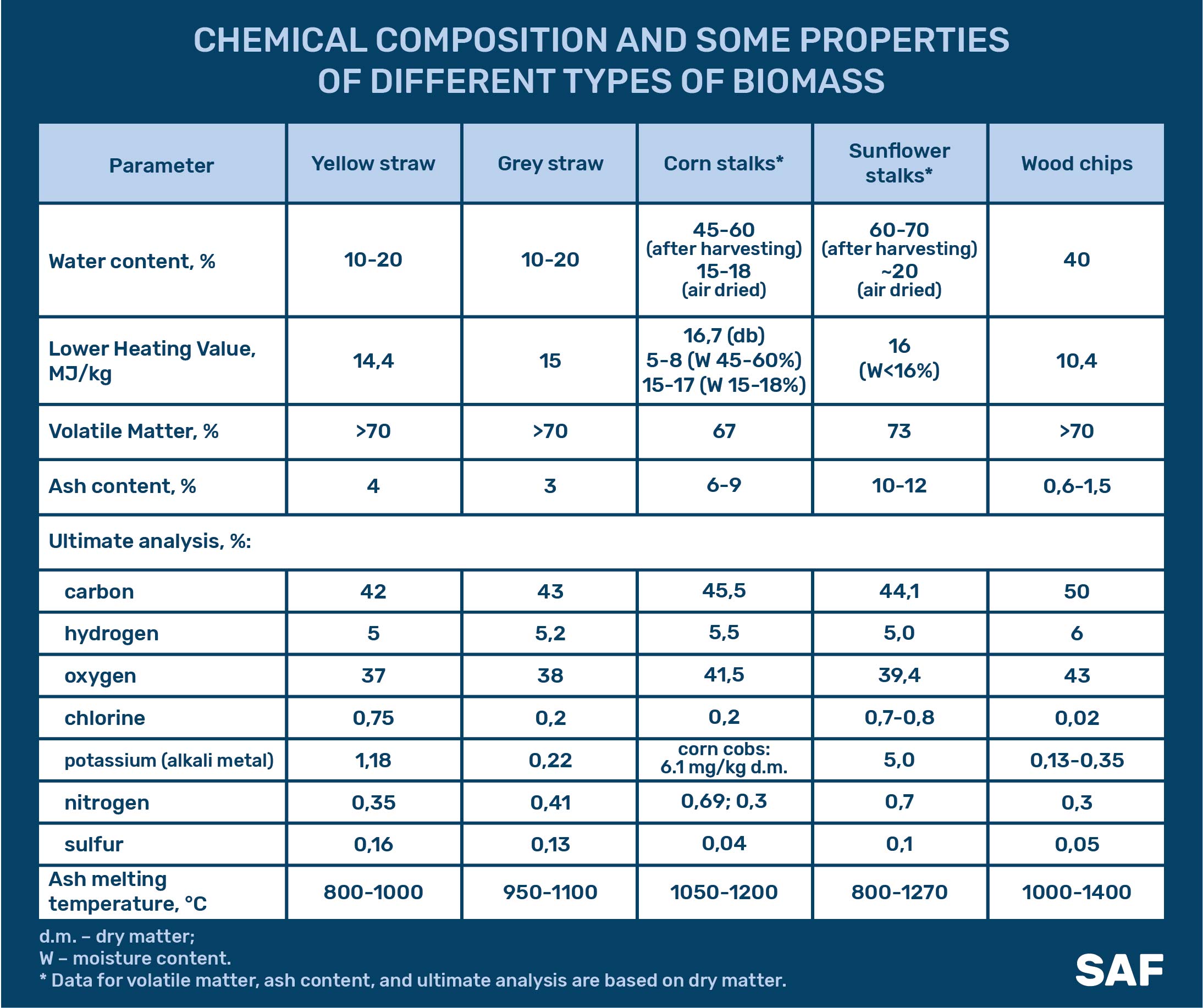In general, sunflower by-products can be considered as lignocellulosic raw material that can be processed into solid, liquid and gaseous biofuels. The content of cellulose in the stalks is 34-42%, hemicellulose – 19-33%, lignin – 12-30%. For the biogas and bioethanol production, sunflower stalks and heads must be pretreated to destroy the lignocellulosic structure. After that, up to 214 m3 of methane can be obtained from 1 t d.m. of sunflower heads, and up to 154 m3 of methane or 101.4 l of bioethanol from 1 t d.m. of sunflower stalks.
The energy characteristics of stalks, heads, husk of sunflower, and oilcake are given in table[1].

The comparison of fuel characteristics of sunflower stalks with straw, corn stalks, and wood chips is given in the table below.

It should be noted that during the harvesting of seeds, the water content of the stalks is in the range of 60-70%, so if it is planned to burn them, this biomass must be dried. The ash melting temperature of sunflower stalks is 800-1270 °С. It is close to straw one and lower than that of corn stalks and wood chips. Sunflower stalks have a high chlorine content of 0.7-0.8%, which also complicates their combustion, as chlorine compounds cause corrosion of steel elements of power equipment.
Fuel characteristics of the by-products determine the use of specialized heating equipment. Therefore, it is important that the equipment manufacturer confirms the possibility of burning such biomass and biofuels produced from it.
The elemental composition of sunflower stalks is almost the same as for straw and corn stalks, so they have nearly equal calorific value. The moisture content has the most significant effect on the calorific value of sunflower residues. As with other types of crop by-products, the characteristics of the matter of stalks and heads depend on the place of cultivation, harvesting time and weather, soil, and fertilizers. Also, the quality characteristics of the harvested sunflower by-products are significantly influenced by the technology of harvesting and storage.
More information about this can find in the UABIO Position Paper «Prospects of sunflower residues use for energy»: https://uabio.org/en/materials/8875/.
[1] D. Duca, G. Toscano, G. Riva, C. Mengarelli, G. Rossini, A. Pizzi, A. Del Gatto, E. Foppa Pedretti Quality of residues of the biodiesel chain in the energy field, Industrial Crops and Products Volume 75, Part A, 2015, 91-97.